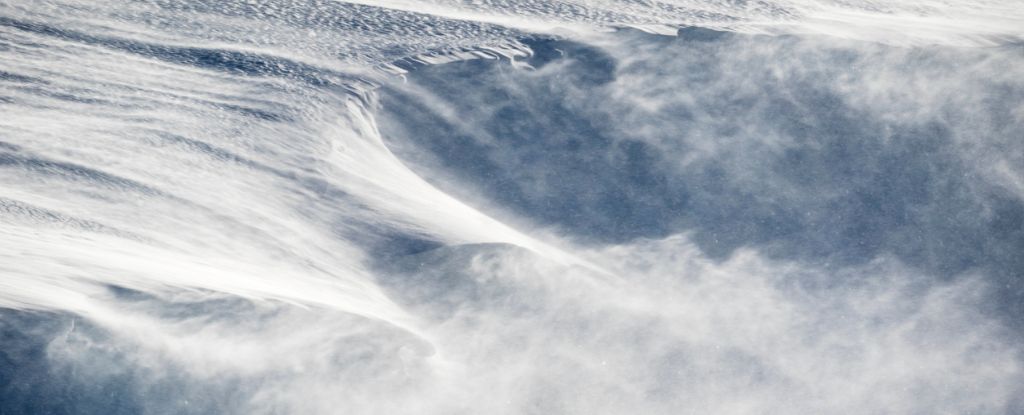Wind and snow don’t always bring about the coldest winters in the Arctic. When snow is blown across sea ice, an international team of researchers has found it can indirectly contribute to regional warming.
That happens because snow in the Arctic contains tiny particles of sea salt. If these aerosols are whipped up into the atmosphere, new findings suggest they can enhance cloud formation by up to tenfold.
Clouds in the Arctic are a two-edged sword when it comes to regional warming. Their presence can reflect sunlight, but they can also impede heat from the surface of the Earth escaping into the atmosphere at night. The trapped heat ultimately has a warming effect on the ground below.
Today, climate scientists agree that the Arctic has warmed many times faster than the rest of the world in the past half-century, but how many times faster is still up for debate.
Climate models don’t always match up with each other or the realities at hand. The paradoxical interaction between Arctic wind and snow could be one of many overlooked factors.
Human-made air pollutants that are blown into the Arctic’s atmosphere are known to trigger regional fog, called Arctic haze, which can have a warming effect, too.
But sea salt particles from the region were not thought to end up in the atmosphere in the same way.
“Sea salt particles in the Arctic atmosphere aren’t surprising, since there are ocean waves breaking that will generate sea salt aerosols. But we expect those particles from the ocean to be pretty large and not very abundant,” explains atmospheric scientist Jian Wang from Washington University in St. Louis.
“We found sea salt particles that were much smaller and in higher concentration than expected when there was blowing snow under strong wind conditions.”
Using data from an expedition that drifted in the Arctic for over a year, Wang and colleagues observed snow blowing more than 20 percent of the time between November and April.
Data from an aerosol-observing system allowed the team to then compare three blowing events to the makeup of clouds overhead.
Their models estimate that sea salt aerosols from blowing snow contribute to more than a quarter of the particles in Arctic clouds.
“Considering the absence of sunlight in the winter and spring Arctic, these clouds have the capacity to trap surface long-wave radiation, thereby significantly warming the Arctic surface,” says first author Xianda Gong, a former postdoctoral researcher in Wang’s lab.
The observational evidence fits nicely with other recent studies, which merely hint at the possibility of sea salt aerosols from snow flying up into the atmosphere on the wings of the wind.
“Model simulations that don’t include fine sea salt aerosols from blowing snow underestimate aerosol population in the Arctic,” says Wang.
“Blowing snow happens regardless of human warming, but we need to include it in our models to better reproduce the current aerosol populations in the Arctic and to project future Arctic aerosol and climate conditions.”
The study was published in Nature Geoscience.





